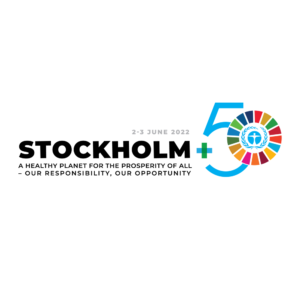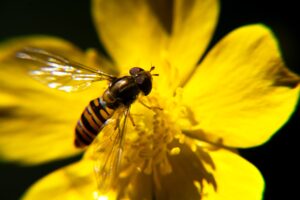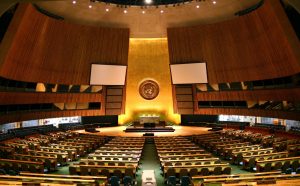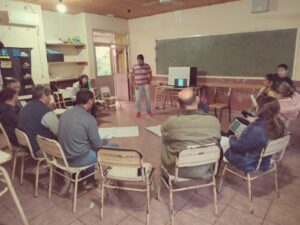The importance of ecosystems (part 2)
Ecosystems are extremely important not only for the organisms that live in them, but also for the animals that depend on them and for humans.
Human behaviour generates actions that affect the biosphere. Among them stand out (unfortunately):
- Extinctions
- Climate change
- Deforestation
- Acid rain
- Desertification
- Pollution
Ecosystem work is divided into four different categories:
- Healthy ecosystems provide support services that create and replenish the foundation of the Earth’s biological systems. These systems include the recycling of all the compounds that are necessary for life through the cycles of carbon, water, nitrogen and phosphorus. They also include processes such as soil formation and atmospheric oxygen production.
- Ecosystems provide us with provisioning services that give us the raw material we need to live. Like the ocean that provides us with food such as fish and seafood, and freshwater rivers and aquifers are sources of water (so necessary for life). Plants and animals produce all kinds of fibre that we use for clothing and shelter. And all around us we find sources of fuel, be it biomass in the form of herbs or wood, hydraulic energy in the form of flowing water or carbon trapped in millions-of-years-old trees that we are now releasing back into the atmosphere.
- Ecosystems also perform super important self-regulatory services. Ecosystems moderate much of Earth’s systems that can be dangerous if they get out of control. Fungi and other organisms take on the job of breaking down dead things and droppings. Plants help filter drinking water and the air we breathe and provide flood control. And they also absorb all that carbon that we exhale and our cars expel, which in turn helps regulate the weather.
- The main reason why biodiversity is so important is that it makes ecosystems more resistant to that endless change. High biodiversity ecosystems are much more resistant to disturbance than those with low biodiversity. In one hectare of tropical forest, in that small piece of land, there are more different species of plants and animals than in all of Europe. So if one species of insect becomes extinct there is less risk that the whole house of cards will fall for example. But in the Sonoran desert, where there are very few organisms, the disappearance of one species could affect the entire ecosystem.
Human activity has made it traditional to endanger some of the most biodiverse ecosystems on the planet. In some cases, having an impact on organisms directly. In other cases, biodiversity is indirectly affected by creating one or two changes in an ecosystem that translate into problems of all kinds for living beings.
Although rainforests are such super-resistant ecosystems, it is having a serious impact on them. How? First, by removing a large amount of what makes a forest a forest: the trees.
According to estimates, around 8,000 hectares of trees are cut down per day to provide land for grazing and to extract wood for furniture and manufacturing.
When a hectare of rainforest is cut down suddenly a place where a few thousand species used to live becomes a place where only a handful of species live: a little cultivation, some bad crops, some rats or mice, some insects. and some cows.
By removing so many of these living beings from a hectare of land, a lot of things happen: not only that ecosystem is affected but also neighboring ecosystems. For example, all the trees that were cut down provided the service of regulating the flow of all the rain that tropical forests receive, not only by absorbing a large part of it but also by slowing down runoff, allowing the water to seep in the ground before slowly reaching streams and rivers and ultimately the ocean.
When these trees are not there, the water hits the ground and goes into the nearest stream causing erosion and dragging thousands of minerals and chemicals to the sea where it affected marine ecosystems (and not exactly in a good way). This is what is called the “waterfall effect” and in this case caused by deforestation (one of the most obvious and observable human impacts).
In addition to causing flooding and changes in water quality, large-scale deforestation can lead to another impact: desertification or the spread of dry or unproductive landscapes. Cutting down trees does not automatically transform forests into deserts; desertification is driven by other factors: grazing and over-irrigation. How can excess risk create a desert? When groundwater is used for crop irrigation, natural salts accumulate in the soil and, eventually, this soil becomes so salty that nothing can live there.
Over time the fertile land near-desert ecosystems became overloaded and the desert spreads. This is exactly what happened in China, where overgrazing and the endless thirst of cities have caused the Gobi Desert to grow 3,600 square kilometers a year.
These two impacts by themselves clearly limit the biodiversity of otherwise lush ecosystems, but because they also result in fewer trees that provide critically important services by releasing oxygen and absorbing carbon dioxide the next domino to fall will be CLIMATE.
Carbon dioxide, the main greenhouse gas, insulates the Earth. So it is logical to think that the more CO2 there is in the atmosphere, the hotter it will be.
Human activity reduces the size of forests at the same time that all kinds of greenhouse gases are unleashed by the burning of fossil fuels. This is a double whammy that is driving global warming.
As a result, we are seeing declines in polar sea ice levels, which means less habitat for polar bears, seals, and seabirds. Warmer animals are migrating closer to the poles and, hotter, drier conditions are causing more grassland fires and wildfires.
Although the climate has changed many more times in the past, those changes took place over centuries and even millennia, giving organisms time to adapt or move. Now, these changes are happening during our lives and, that acceleration is something very complicated.
Another way that biodiversity is affected is by intentionally or unintentionally introducing non-native species. Invasive species have a knack for outcompeting or outright eating native species to the point that it disrupts the world of an entire ecosystem.
Finally, probably the most direct impact we have on biodiversity is simply the over-harvesting of certain organisms. Overfishing is being done to meet the growing demand for popular fish species such as tuna, while on land important predators such as wolves are being exterminated to protect livestock.
Consequently, the less diverse the ecosystems are, the more vulnerable they will be to disturbances. Human actions are not limited to those mentioned there, it is a whole separate series of effects that humanity has on the biosphere that derives from us simply putting the wrong amounts of certain things in the wrong place at the wrong time. This is what is called POLLUTION.
Source: CrashCourse
Alecrin biodiversity BiodiversityDay carbon credits carbon footprint climate change comunidades locales Cooperativa Nueva Esperanza CPSI program cruce caballero ECOLOGY ecosystems ENVIRONMENT environmental education environment crisis ESG Criteria FORESTS ForNature Free and Informed Prior Consultation gaia gaia theory global warming gs1 reserve gs1reserve Highlights localcommunity Metodología de investigación social native communities native species nature news Patagonia PNUMA reforestation regeneration Relaciones con la comunidad reserva GS1 Responsabilidad social SDGs stockholm+50 sustainable investment UN UNEP woods on fire youth







